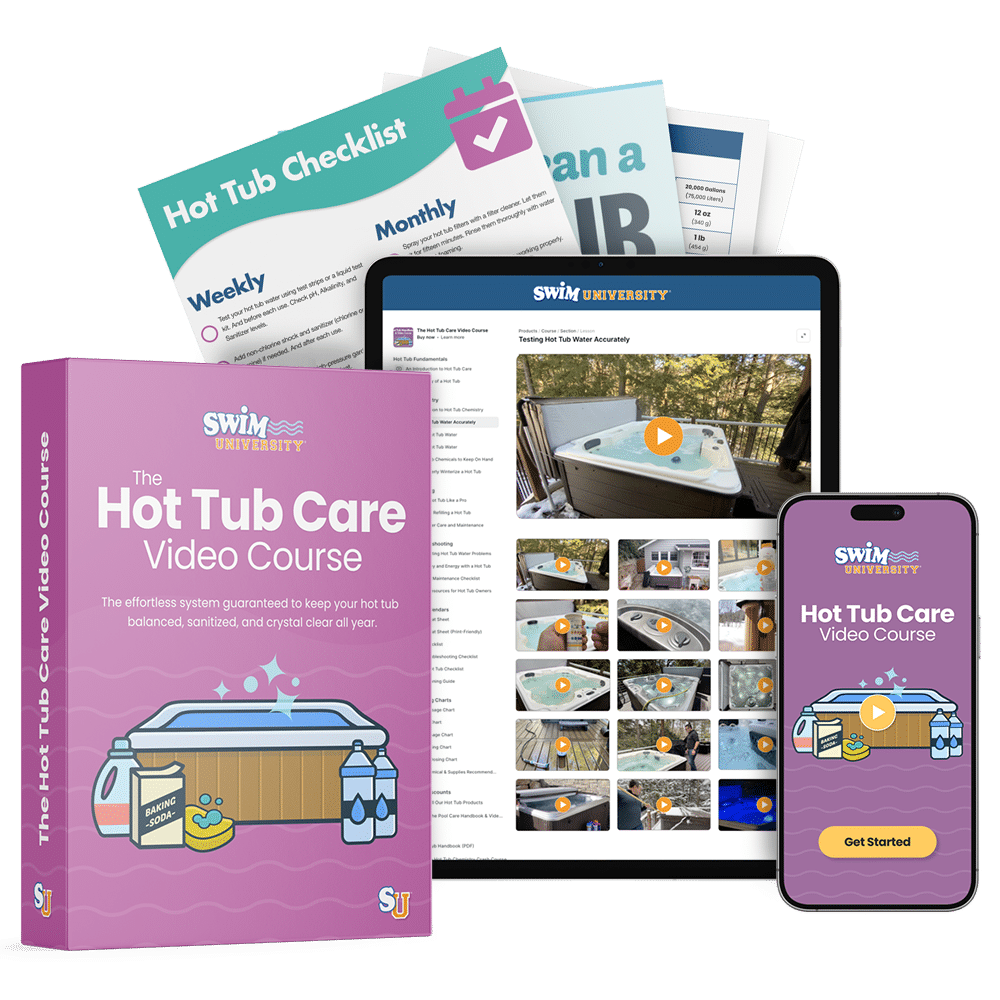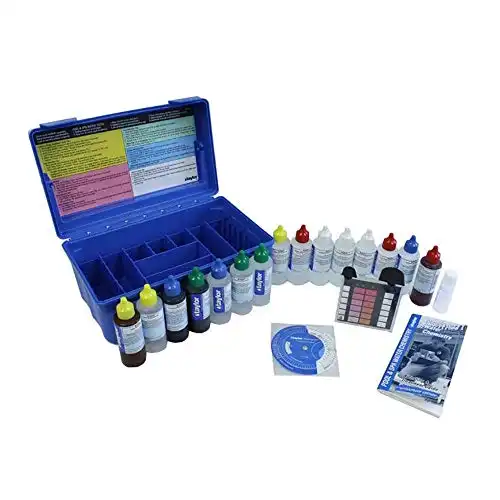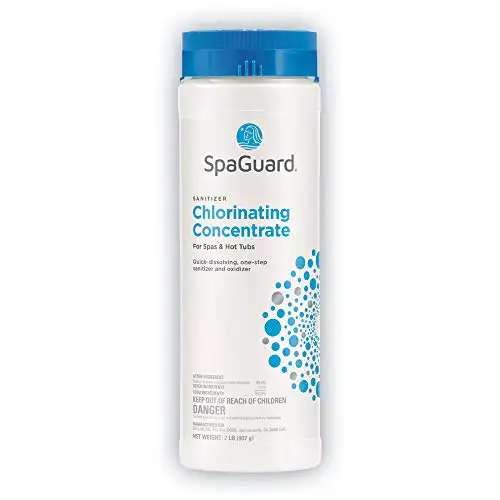
To keep your hot tub clean and safe to soak in, you need the right hot tub chemistry levels. But which ones? And when do you add them? And how much of each one do you need? And how do you actually add them to your hot tub?
Relax. It’s not as confusing as it may seem. Once you get a handle on the what, when, and how of spa chemicals, taking care of your hot tub will be easy.

Cut the confusion with our easy-to-use video course. Save $1,000's on hot tub care and keep your water clean and clear for good!
Yes. Yes, you do. This isn’t like a bathtub that you fill, use, and immediately drain. The same water stays in your hot tub for weeks, sometimes months. Without chemicals to keep it sanitized, it would quickly turn into an incubation chamber for numerous organisms you definitely would not want to soak in.
If you were thinking you could just vacuum the tub once in a while, keep leaves and other debris out of the water, and that would be enough, you’re setting yourself up for a lot of cleanup work, potential equipment failure, and possibly even hot tub–related illness.
The key to preventing all of those things is using the right spa chemicals. We have a complete guide on what hot tub chemicals to buy. Or keep reading to learn more about using each chemical.
You have three main questions about balancing your hot tub water. The first is, “What chemicals do I need for my hot tub?” The second one is, “How much of those chemicals do I use?” The only way to get the answers to both of those questions is to test the hot tub water, and there’s a lot to get through before you even consider the third question about how to add them.
The only way you’ll know which chemicals you need to add, and how much of each one is needed to balance the hot tub chemistry is to test your water. Be sure to keep test strips or, for more accuracy, a liquid test kit stocked and on hand at all times.
You can also take a water sample to a local pool and spa store and ask them to test it for you.
Once you have the baseline readings, you can start measuring and adding the right amounts of the necessary hot tub chemicals.
Our Top Pick
A simple but effective liquid test kit for chlorine pools and hot tubs.
If you click this link and make a purchase, we earn a commission at no additional cost to you.You could say this is the most important of all the spa chemicals you’ll use. After all, it’s what keeps your hot tub, well, sanitized.
The first thing to decide is which sanitizer you want to use, and you have a handful to choose from:
Each one has its pros and cons, so take the time to learn about them before making your choice.
Being the most common sanitizer, chlorine has a few advantages over the others:
In the same way you may use bleach to kill bacteria, fungi, and viruses in your bathroom, chlorine does all that for your hot tub water.
One drawback to chlorine can be the smell it gives off. Except it’s not the chlorine that smells. Chlorine kills contaminants by oxidizing and breaking down into its chemical components. As this chemical reaction occurs, the oxidation gives off waste products called chloramines. They’re what causes that “chlorine smell.”
If you can smell “chlorine,” it probably means you actually don’t have enough chlorine in your water because it’s been used up.
Test your water, and if the level is below where it should be, shock your hot tub to bring it back up quickly, get rid of the chloramines, and put the chlorine back to work killing contaminants.
Proper Chlorine Level: 1 part per million (ppm) to 3 ppm
Our Top Pick
Easy to add chlorine to your hot tub with granules (powder) and a cap that's perfect for measuring the amounts you add.
If you click this link and make a purchase, we earn a commission at no additional cost to you.Probably the second-most common sanitizer, bromine has one distinctive advantage over chlorine—it doesn’t oxidize, which means it doesn’t give off chloramines. Instead, bromine ionizes contaminants, breaking them apart at the molecular level.
The process produces a different waste product—bromamines. While they don’t smell and aren’t as noxious as chloramines, they still reduce the sanitizer’s effectiveness, and you don’t want them hovering around your hot tub. Keeping your bromine level steady will prevent this.
Bromine also has a few other advantages over chlorine:
Bromine does have a couple of drawbacks, though. While it lasts longer than chlorine, it also works more slowly, which means contaminants are in the water longer before they’re destroyed.
It’s also unstabilized, which means if you use it in an uncovered, outdoor hot tub, it’ll burn off pretty quickly under the sun. Unlike chlorine, which can be stabilized by cyanuric acid, bromine doesn’t have a stabilizing partner chemical. We think it’s best for indoor hot tubs, or at least ones that are outside but not in direct sunlight.
Proper Bromine Level: 3 ppm to 5 ppm
A non-chlorine sanitizer, biguanide (sold under brand names such as BaquaSpa) kills bacteria just as well as chlorine and bromine do. It has a few other advantages as well:
On the downside, biguanide usually costs more than chlorine and bromine. It’s also been known to cause deterioration in some spa parts like rubber gaskets and certain plastics. Check with your hot tub manufacturer before using it.
Proper Biguanide Level: 30 ppm to 50 ppm